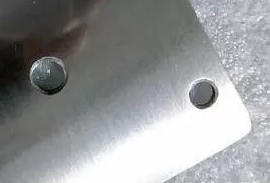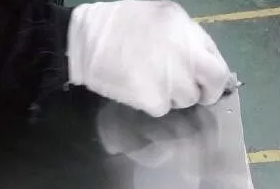Nowadays, the sheet metal industry has entered the era of micro -profit. The objective status quo is: raw material prices have continued to rise, labor costs are increasing year by year, and the costs of assistive materials and auxiliary processes (electroplating, electrolytes, oxidation, and spraying) are also rising, and corporate profits have been reduced to the limit. How companies are lean to produce, avoid unnecessary waste, and save costs are particularly important. Because the surface protection of 430 stainless steel during the processing process is not in place or the surface is often scratched and scratched during the turnover process. In order to avoid product scrap and save processing costs, the surface scratching process can save a lot of enterprises. Material cost loss.
430 stainless steel surface scratching process can be divided into six stages. The sequential order of the treatment is: local treatment of sandpaper → grinding tablets overall treatment → grinding paste and dustless cloth overall treatment → removing oil and dustless cloth overall cleaning → processing Effect confirmation → packaging.
Step of sandpaper local processing operation steps
(1) Confirm that there is no deformation and consistent texture, cutting the edge without burrs and sharp corners, and 0.2 ~ 0.3mm around the periphery of the hole
(2) Put the air bubbles and pearl cotton on the work table according to the sequences, and place the parts as a whole on the pearl cotton.
(3) First use 320 mesh sandpaper to deal with scratches and scratches at part, as shown in Figure 2.
(4) Use 1000 mesh → 2000 mesh sandpaper to deal locally until the defect is eliminated.

Precautions
(1) The operator must wear labor insurance supplies to work, such as white gloves, labor protection shoes, etc., so as not to cut the fingers or materials to hurt the toes.
(2) The operator's body and parts are kept at least 100mm distance, so as not to cut through the work clothes, or cause new flaws and scratches on the surface of the parts.
(3) The first order of the sand paper is 320 mesh → 1000 mesh → 2000 mesh.

Gourge paste and dust -free cloth overall processing operation steps
Put the dustless cloth on the handle, apply the grinding paste to the dust -free cloth, and then evenly apply it to the surface of the product. Then, grind the dustless cloth along the direction of the part of the part, grind the overall grinding more than 3 times.
Precautions
The operator should ensure that wearing labor insurance supplies operations, and the body and parts are cut at least 100mm distance. When grinding, work in the direction of the parts of the parts, and it should be a straight line. During the grinding process, if the surface of the dust -free cloth is found, it should be replaced in time to avoid affecting the surface treatment effect.
Oil -removing stains and dustless cloth overall cleaning
The dust -free cloth is covered with the oil and the texture of the parts is cleaned as a whole, at least three times, and the operating precautions are the same as the above -mentioned stage.
Confirmation of research and processing effect
After processing, observe the overall effect, observe the surface without scratches, scratches, no color differences, consistent texture, bright color and no dirt, then repairs are qualified.
Package
Before the packaging, confirm whether there are defects such as scratches, abrasions, and small concave pits on the surface. If there are the above defects, repeat the above steps to repairs.
